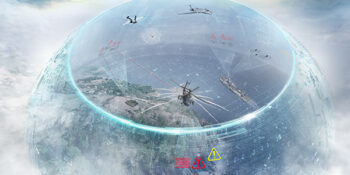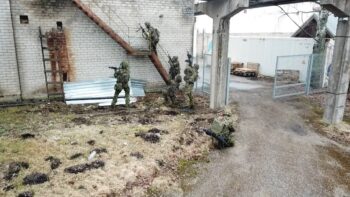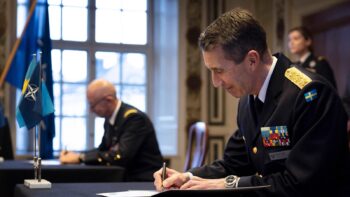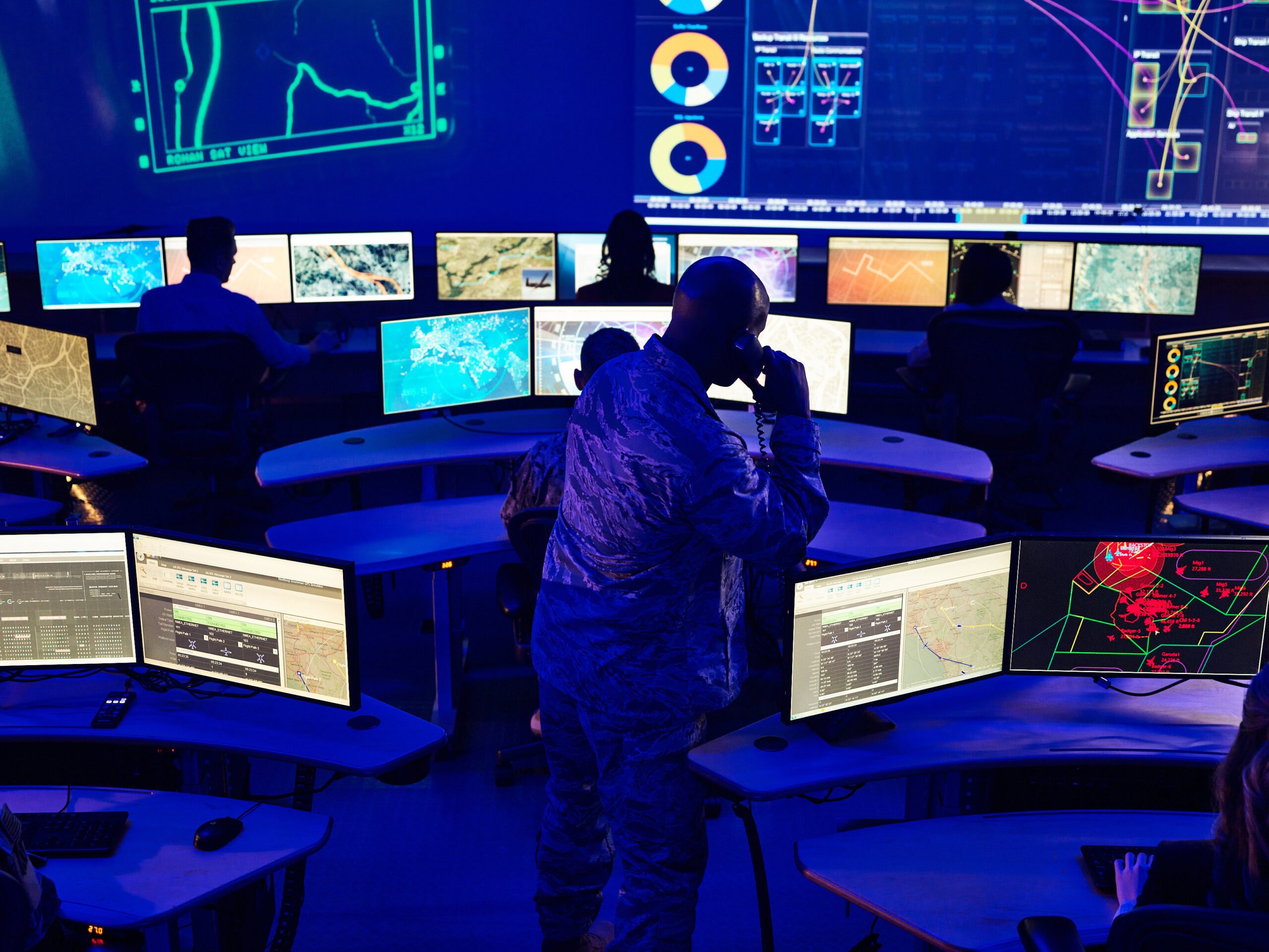
The Internet of Warfighting Things is applicable to both the kill chain and command/control aspects of Joint All Domain Command and Control. Image courtesy of Northrop Grumman.
In this Q&A with Scott Stapp, Vice President of Capability and All Domain Integration, Northrop Grumman Space Systems, we discuss the difference between the Internet of Military Things (IoMT) and the Internet of Warfighting Things (IoWT); and how IoWT is what will let combatant commanders not only command but also control.
Breaking Defense: We’re going to be discussing the Internet of Warfighting Things, which is slightly different from the Internet of Military Things. What do you see as the difference?

Scott Stapp, Vice President of Capability and All Domain Integration, Northrop Grumman Space Systems.
Stapp: If you think about what JADC2, or Joint All Domain Command and Control, is trying to achieve for the Department of Defense (DoD), it’s the Internet of Warfighting Things. The reason I use the term “warfighting” versus “military” is because I know from my background as a 30-year military guy that if you say “military” things what you get is Army, Navy, Air Force, and Marines. That’s military.
Here’s warfighting. When you go to war, four DoD defense agencies — National Geospatial Intelligence Agency (NGA), Defense Intelligence Agency (DIA), Defense Information Systems Agency (DISA), and National Security Agency (NSA) — become Combat Support Agencies. They are part of the warfighting mechanism, so you need to include all the capabilities they bring to bear.
For example, space-based ISR needs to be integrated and accessible to the warfighter during a conflict. That means you need all of those space capabilities directly connected to the warfighter. Thus the Internet of Warfighting Things, not just military things.
Breaking Defense: What is the difference between IoWT and commercial IoT where you control your house thermostat from an app?
Stapp: We connect things in networks. If you look at a Link 16 network, it allows connectivity amongst a package of fighters. They can talk to each other and pass data but they still can’t connect to space or many of the maritime systems. In the past, that would have been called a local area network. We’re looking at broadening that to a wide area network where any data generated is available across all the domains: air, land, sea and space.
What’s interesting about the Internet of Things is the ubiquity of data accessibility. The key is that the same data is accessible to everybody, but everybody uses it in different ways.
In the end, this is all about data and the movement of data, it’s not about changing your platforms. It’s about using non-organic data to make your platform more effective and ensuring that data generated by any platform is usable by other platforms.
So when looking at the commercial Internet of Things, cloud services have definitely been one of the key enablers for its success. The ability to not have data isolated on-premise, but to actually have it stored in a cloud for everyone to access has been game-changing. Data tagging will also allow the warfighter to make queries in such a way that if somebody says, “I’m fighting in this front area and I am looking for information on the adversary in these areas,” it automatically populates just like it would with a Google search. Robust cloud storage and computing allows for these types of advances.
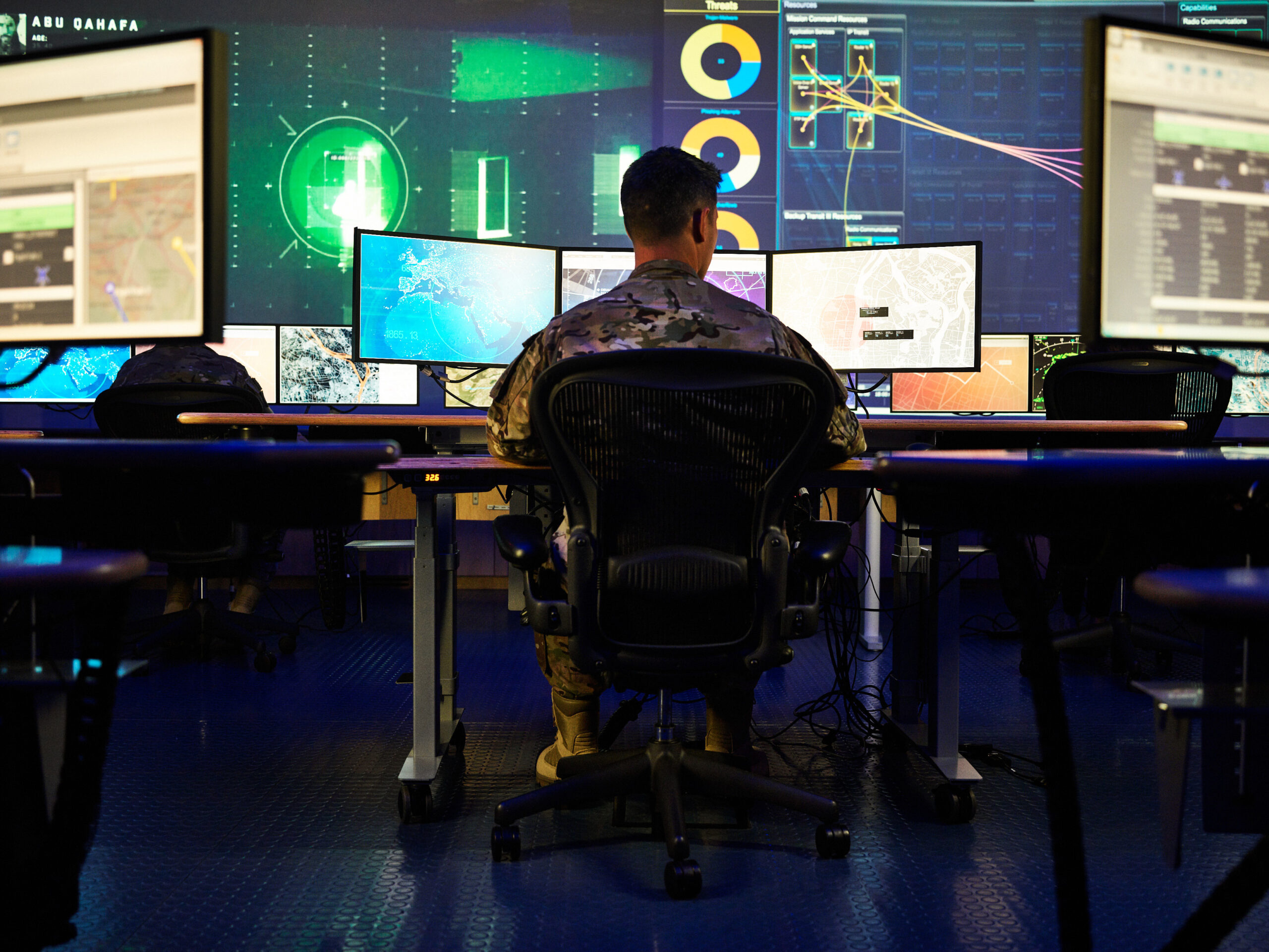
To be successful, the Internet of Warfighting Things will be dependent on building resilient communications through space, air, and land. Image courtesy of Northrop Grumman.
Breaking Defense: Connect IoWT to JADC2. Is it most applicable to the kill chain and the OODA loop aspect of JADC2 or to the command and control aspect?
Stapp: It’s both. People tend to think of the term “command and control” as too complex. All it really is just an authority.
Here’s the connection to the Internet of Things. If you look at your personal life, you have command authority over your bank account, your travel, your work, your personal calls, your house and security. If you don’t have connectivity, however, — if you don’t have a Ring doorbell to look into security in your house or you don’t have a phone that allows you connectivity to your bank — you do not have control.
Looking back, you always had command authority over everything you owned, but you didn’t necessarily always have control. Using a bank for example, unless you physically walked in and talked to them directly you didn’t have direct control over your money.
There’s also a time issue associated with control. In the military, command is always there. A combatant commander or any commander down the line always has command authority. It goes to bed with them at night, it stays with them all the time. What they lack is control. A combatant commander may have a unit he has command authority over, but if he can’t talk to them and connect to them, he doesn’t have control.
What this Internet of Warfighting Things can do is connect you to everything just like your phone does. In the future, the idea is for commanders to have intimate knowledge over everything they command and have actual accessibility through comms and data to control those elements.
That is what the Internet of Warfighting Things is. It’s almost a duplicate of the Internet of Things. Much in the same way each individual commands and controls their own life, this allows each commander to do the same thing. Integrating systems together doesn’t mean all the services have to operate under the same CONOPS.
If you’re a naval vessel with your own CONOPS, a space system can now give you additional information over the horizon that you could normally not have gotten, or an airplane from the Air Force can give you information on the adversary that you could never have gotten organically. That doesn’t change your CONOPS. It allows you to execute it more effectively.
Very much like every human has access to the same data on the Internet, we all operate in our own CONOPS. We don’t have to all operate exactly the same way. But when you decide to team with someone, say the Navy decides to do a joint operation with the Air Force and they have access to the same data, it helps them to transform their CONOPS to more effectively operate together when they choose to.
Breaking Defense: Is all that connectivity done exclusively through the cloud? Is that what lets you connect to everything that you command, to use your earlier example?
Stapp: That would be the idea in the long run. Right now that’s part of this issue because our military systems have never operated like that.
What makes the Internet of Things successful is communications capabilities. With fiber networks everywhere, data can transit to anywhere. With data storage centers like you’ve seen with big tech you can access what you need in almost real time.
The Space Development Agency is starting to build out what’s called the SDA Transport Layer [a satellite constellation of several hundred satellites for assured, resilient, low-latency military data and connectivity worldwide to a range of warfighter platforms]. This comms transport layer in space is a recognition that large data requires robust communications paths.
For the Internet of Warfighting Things to be successful, it will be dependent on building resilient communications through space, air, and land and then ensuring that data is accessible both at the edge and in the rear. Data at the edge is critical for real-time operations. While these data hubs will likely be smaller, they provide real time fused data that’s actionable to the warfighter. The balance between pushing data to the edge and pulling data from sources in the rear is a balance that is still being worked out.
Breaking Defense: In bringing together all of that data, does that require certain data standards?
Stapp: Capabilities exist today that help us bridge that gap. The use of gateways is allowing us to provide access to disparate data sources. Gateways provide a mechanism for various disparate platforms to communicate without common consensus on the open standard. They also provide an affordable means to modernize without retrofitting all assets across the Department of Defense. Our gateways are a proven capability built with open architecture that prevents vendor lock and operate today in multiple combatant commands. As new systems are fielded, open architectures and standards are built in from the start, allowing for seamless data sharing and connectivity across the joint and coalition forces.
Breaking Defense: What differentiators is Northrop Grumman leveraging to bring mission-critical technology such as IoWT to service operations?
Stapp: Industry can help thread the government together because we work across all government agencies. The government works with all industry partners and can help thread industry together. Weaving these two threads together is the foundation for integration of all our systems.
Currently, each service has their own instantiation of JADC2: Air Force with ABMS, Army with Project Convergence, and Navy with Project Overmatch. Northrop Grumman threads across every single service and every single agency, we have a unique ability to see across the entirety of the operational mission thread and can help integrate across those lines. We are one of very few contractors who has that view in its entirety.
If the combatant commander says that a specific asset needs to be attacked, we can pull a thread through that entire mission thread — find, fix, track, target, engage, assess — and we can do that across almost any threat. We’re taking capabilities we’ve developed for all the services and the intelligence community, and we’re threading them all together to help the combatant commander and the warfighter achieve their objectives.


















